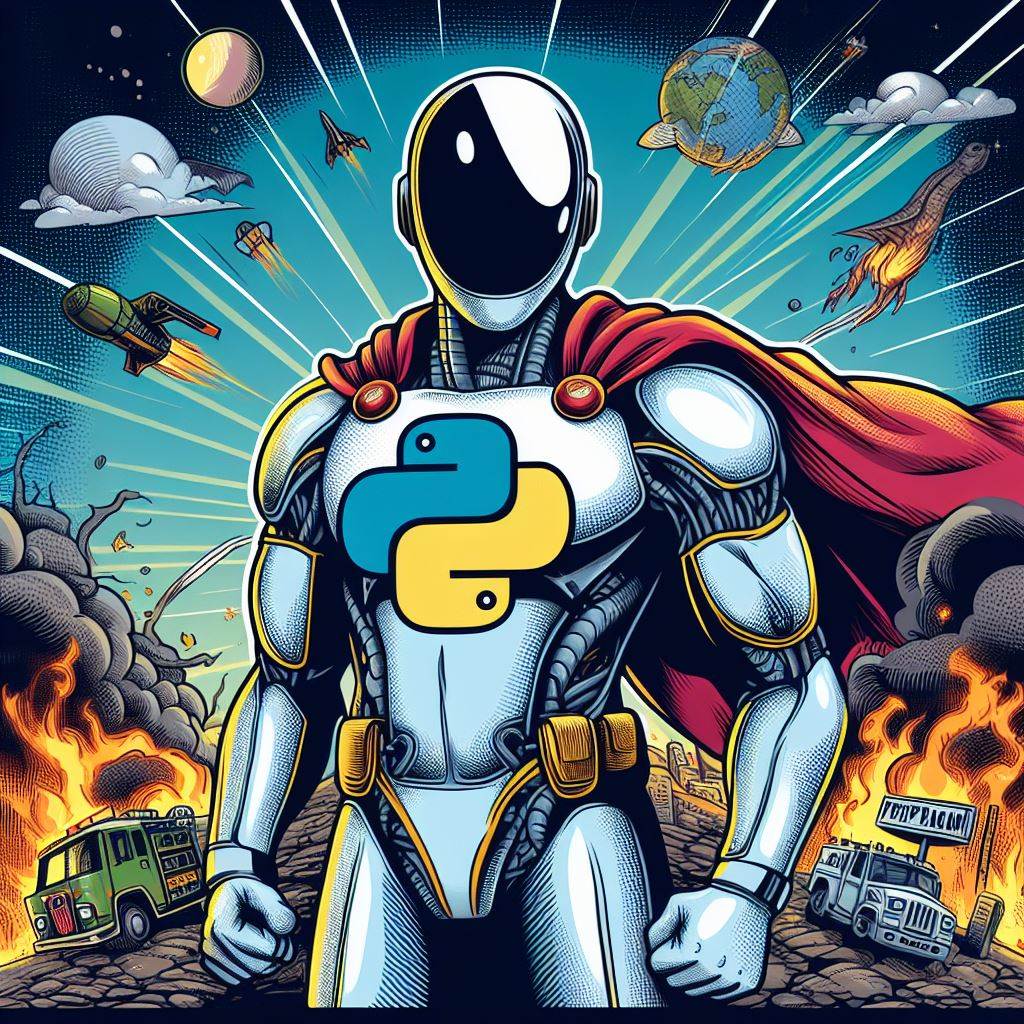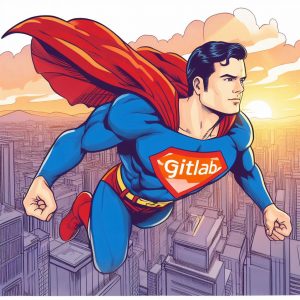In the dynamic realm of programming languages, Python stands as a towering force, weaving its way through the intricate tapestry of modern technology. From its origins to its current position as the preferred language for developers worldwide, Python has catalyzed a revolution that extends beyond mere code. In this blog, we embark on a journey to explore the synergy between Python and Artificial Intelligence (AI), unraveling the significance of this pairing, understanding its transformative potential, and discovering how you can master it to be a part of the future.
Our Goal:
- Briefly introduce the concept of AI and its significance in today’s world.
- Highlight the role of Python in the AI landscape.
What is AI and Why Python?

- Understanding AI:
- Define AI and its various applications (machine learning, deep learning, natural language processing, etc.).
- Showcase real-world examples where AI has made a significant impact.
- Python’s Dominance:
- Explore why Python is the preferred language for AI development.
- Discuss Python’s simplicity, readability, and extensive libraries (NumPy, TensorFlow, PyTorch).
The Need for AI:
- Examine the societal, economic, and technological factors driving the need for AI.
- Discuss how AI is solving complex problems and optimizing various industries.
How AI is Changing the World:
- Transforming Industries:
- Illustrate how AI is revolutionizing sectors like healthcare, finance, education, and more.
- Provide specific examples of AI applications in each industry.
- Addressing Global Challenges:
- Explore how AI is contributing to solving global challenges like climate change, healthcare disparities, and poverty.
Mastering AI with Python:
- Learning the Basics:
- Recommend online courses, tutorials, and resources for beginners.
- Highlight the importance of a strong foundation in Python programming.
- Dive into Libraries:
- Discuss key libraries like NumPy, Pandas, Scikit-learn, TensorFlow, and PyTorch.
- Provide examples and exercises for hands-on learning.
- Projects and Practical Experience:
- Emphasize the significance of working on real-world projects.
- Suggest AI project ideas and platforms for collaborative learning.
Being a Part of the AI Revolution:
- Continuous Learning:
- Encourage ongoing education and staying updated on AI trends.
- Suggest forums, conferences, and online communities for networking and learning.
- Contributing to Open Source:
- Highlight the value of contributing to AI-related open-source projects.
- Showcase platforms and initiatives that welcome contributions.
- Building a Portfolio:
- Discuss the importance of a strong portfolio in the AI field.
- Provide tips on showcasing projects and skills effectively.
Mastering AI with Python
1. Effective Use of Jupyter Notebooks:

In the dynamic world of AI, Jupyter Notebooks stand as your interactive canvas. Harness its power for iterative coding, seamless visualization, and clear documentation. Markdown cells within Jupyter are your allies for explaining the logic behind your AI magic.
2. NumPy and Pandas Mastery:
Elevate your AI game with NumPy and Pandas. Master NumPy for swift numerical operations and Pandas for agile data manipulation. Whether you’re crunching numbers or reshaping datasets, these libraries are your indispensable companions.
3. Optimize Code with Vectorization:
Unleash the power of vectorization in NumPy to optimize your AI code. Say goodbye to sluggish loops and embrace the efficiency of array manipulations. Let your AI algorithms run at warp speed.
4. Explore Python Decorators:
Elevate code aesthetics and modularity with Python decorators. These snippets enhance readability and functionality. Use decorators for everything from logging to caching in your AI projects.
5. Use List Comprehensions:
Simplify your code with the elegance of list comprehensions. Whether you’re wrangling data or creating concise AI algorithms, list comprehensions are your secret weapon for readability and efficiency.
6. Context Managers for Resource Management:
Navigate the complex terrain of resource management effortlessly with context managers. The with statement is your key to gracefully handling files, databases, and external APIs in your AI endeavors.
7. Employ Generators for Large Datasets:
Tackle massive datasets without breaking a sweat. Generators enable you to efficiently process data in chunks, sparing your memory resources. Ideal for AI projects dealing with large-scale information.
8. Parallelize with Multiprocessing:
Supercharge your AI computations by embracing multiprocessing. Python’s multiprocessing module allows you to harness the full might of multiple CPU cores. Turbocharge your algorithms for peak performance.
9. Mastering List Comprehensions:
Elevate your Pythonic prowess with list comprehensions. These succinct constructs are invaluable when dealing with lists and iterators in AI projects. Enhance readability while maintaining efficiency.
10. Regular Expressions (Regex):
- Gain Proficiency: Hone your skills in regular expressions for efficient text processing.
- Utilize
reModule: Employ theremodule to seamlessly search, match, and manipulate strings in your AI projects.
11. Explore Python’s Decorators:
- Understand and Apply: Grasp the essence of decorators to modify or extend the behavior of functions.
- Versatile Applications: Apply decorators for tasks such as logging, caching, and more, enhancing the functionality of your AI code.
12. Utilize Python’s Virtual Environments:
- Create Isolation: Craft virtual environments to manage dependencies for distinct projects.
- Tools at Your Disposal: Leverage tools like
venvorvirtualenvto ensure isolated and organized project environments.
13. Leverage Python’s Built-in Functions:
- Optimize Your Code: Maximize efficiency by making the most of Python’s built-in functions.
- Powerful Tools: Explore functions like
map(),filter(), andreduce()as formidable tools in your AI coding arsenal.
14. Effective Use of Dictionaries:
- Versatility Unleashed: Grasp the full potential of dictionaries in Python for data manipulation.
- Advanced Data Structures: Utilize dictionary comprehensions and the
collectionsmodule to create sophisticated data structures in your AI projects.
15. Embrace Pythonic Idioms:
- Coding Elegance: Familiarize yourself with Pythonic coding practices to craft more readable and idiomatic code.
- Adhere to Standards: Follow PEP 8 guidelines for style and formatting, ensuring your AI projects maintain a high standard of code quality.
Conclusion

“As we reflect on Python’s remarkable achievements, it’s essential to acknowledge that the Python narrative is ongoing. The language continues to progress, adjust, and explore new territories, transforming how we tackle challenges from classrooms to boardrooms. Python has not only revolutionized problem-solving but has also unlocked innovative possibilities beyond our imagination.
In the realm of Python, the adventure persists. Nice Future remains a constant companion, guiding you—whether your journey involves Python or ventures into broader realms where creativity intersects with technology. As we navigate the expanding horizons of Python, keep in mind that Nice Future Inc. is here to accompany you on your path.
Whether you’re an experienced developer or a curious beginner, join the Python community. The revolution is still unfolding, with more code to write, problems to solve, and enjoyable experiences ahead. Embrace the promising future, stay connected, and enjoy the coding journey! Nice Future Inc. will return soon with additional insights and innovations for the tech enthusiasts of tomorrow. Here’s to the exciting adventures ahead!
Stay connected—Happy coding! Nice Future Inc. will be back soon!”
Subscribe to our newsletter!




